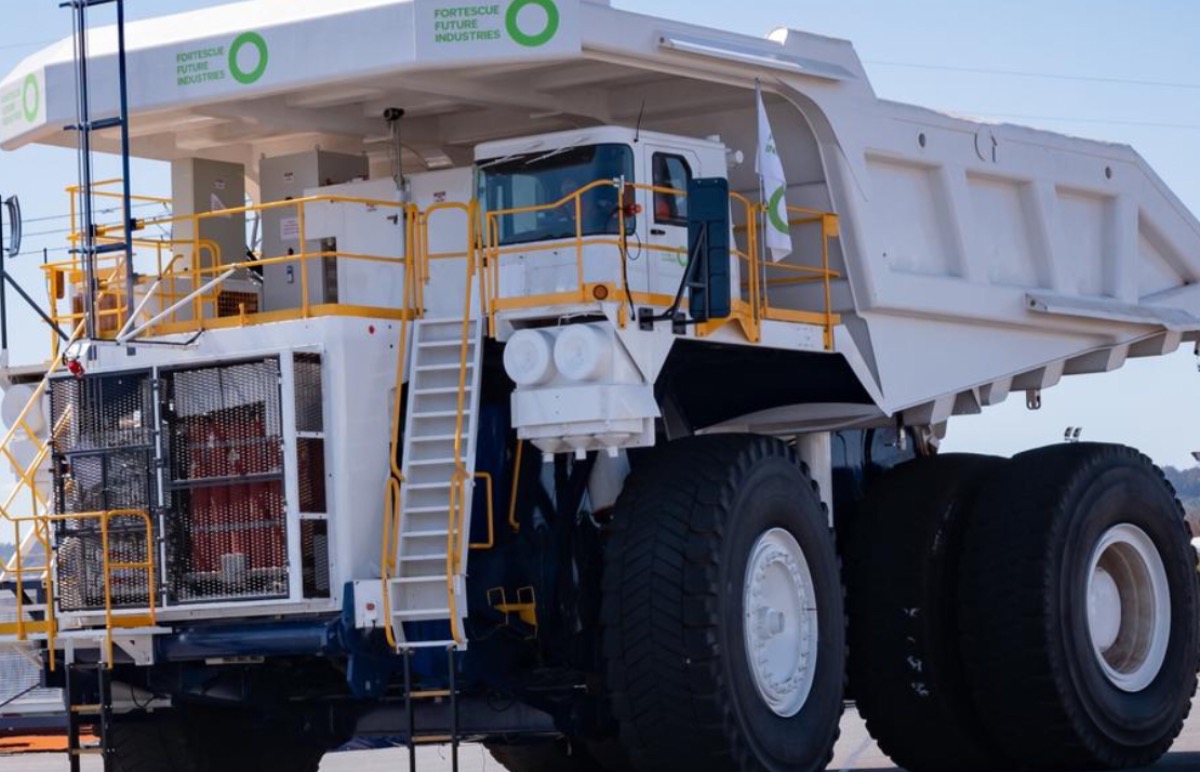
Can We Turn Water into Fuel?
Fortescue will replace 45% of all their haul trucks at its Pilbara iron ore mines with battery and hydrogen-powered units from German firm Liebherr. Fortescue will integrate technology from the UK’s Williams Advanced Engineering (an offshoot of the Williams Formula One racing team) with Liebherr’s trucks.
The 120 vehicles will replace almost half of Fortescue’s haul trucks and lower its consumption of 200 million litres of diesel a year.
Fortescue chief executive Elizabeth Gaines said “We strongly believe that enhancing technology is key to addressing climate change.”
WA’s Renewable Energy Powerhouse
Mining magnate Andrew “Twiggy” Forrest, founder of Fortescue, explained that the goal would be to zero out its own carbon emissions and become a renewable energy powerhouse.
“Global warming, all of you know, is really serious, and it’s accelerating a lot quicker than anybody thought,” said Dr. Forrest, on a visit to the Pilbara. Australia’s mineral heartland in the North West produces one third of the World’s iron ore and it is where Forrest made his first fortunes.
Fortescue made $10.3 billion in profit in 2020 by extracting iron ore and selling the majority to Chinese steel makers. The process of extracting the mineral is believed to have released 2.2 million tons of greenhouse gases — more than some small countries produce. The iron and steel sector alone emits approximately 7% of the world’s carbon dioxide. That is more than all the cars in the World!
Recognising Responsibility
But Dr Forrest recognises it is his responsibility to put this right, to do something for the good of the planet before it’s too late. He earned a Ph.D. in marine ecology from the University of Western Australia three years ago, which has perhaps focussed his mind to do more to stop climate change.
His plan is to decarbonise by 2030.
His company is currently worth more than $30 billion.
He could loose it all if his plan fails.
Mavericks of the World
But, when we look back at history, it is the mavericks of the world, the movers and shakers who take the risks, the entrepreneurs who make the money and then once the wealth has become the norm, sit back with their philanthropic hats on and think; “now how can I make the planet a better place.”
These are the people who pro-actively seek change and pro-actively make things happen and for that we should perhaps applaud them?
Government Backing
Unveiled in the federal budget this month, the government has thrown $2 billion to kickstart the fledgling industry and boost developers ambitions to turn water into fuel.
The ‘Hydrogen Headstart’ program will provide credits per kilogram of green hydrogen production to help bridge the gap between production costs and current market prices, with an aim to support between two to three starter projects.
On further news, Imperial College London and Hitachi have announced that they have signed an agreement to establish a joint research centre for decarbonisation and natural climate solutions. They hope their research will lead to achieving a Net Zero future.
Sources: The New York Times, The Sydney Morning Herald, ABC, Australian Mining, Hitachi, Daily Telegraph


